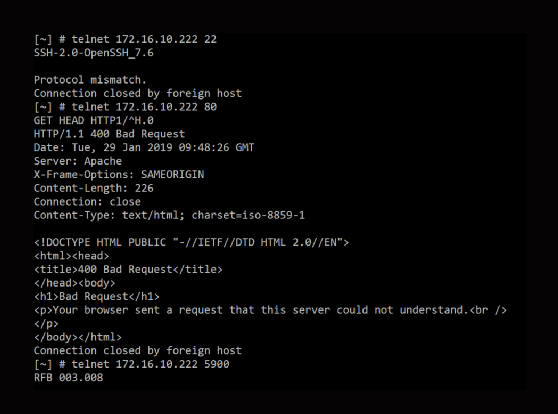What is Telnet?
Telnet is a network protocol used to remotely access a computer for a text-based communication channel between two machines.
Modern Telnet uses the TCP/IP networking protocol. Telnet can be used with File Transfer Protocol (FTP) to enable users to request specific files from remote computers. Users can log on as regular users with privileges, enabling them to access the specific applications and data on that computer.
The following is an abstract example of the syntax for a Telnet command request:
telnet the.libraryat.whatis.eduThis request would result in an invitation to log on with a user ID, and the program would prompt the user for a password. If the computer accepts the user, it grants them access to the remote host.
Telnet has largely been replaced by the more modern Secure Socket Shell (SSH) for accessing servers and computers. It can still be used for embedded or internet of things devices that run simple operating systems.
How Telnet works
Telnet is a client-server protocol that opens a command line or terminal on a remote computer, typically a server. Telnet works with a virtual terminal connection emulator, which is an abstract instance of a connection to a computer. It uses standard protocols to act like a physical terminal connected to a machine.
Telnet also sometimes uses FTP to help users send data files. Users connect remotely to a machine with Telnet, which is sometimes referred to as "Telnetting into the system."
Telnet essentially sends plain text back and forth between the client and server. It uses American Standard Code for Information Interchange (ASCII) and other formatting commands like line return or clear screen.

Uses of Telnet
Telnet enables users to do anything on the remote computer that they can do with the command-line terminal. Historically, users could employ Telnet for various activities, such as editing files, running various programs and checking email. Some used Telnet to access public data, play games or look up weather reports. These features still exist for nostalgic fun or because they are compatible with older systems that need access to specific data.
In modern use, Telnet is primarily employed to connect to legacy devices or for a low-level connection to a text resource. Many low-power or simple devices employ Telnet because it is easy to implement. For example, a network-connected uninterruptible power supply or security camera might have a Telnet connection so that the administrator can configure it.
Another use of Telnet is to test other text-based network protocols. For example, Telnet can be used to send and receive text from a web server to troubleshoot issues at a low level. This use has been largely replaced by other tools such as cURL or network inspection.
Telnet security
Telnet is neither encrypted nor secure. Because Telnet is a plain text protocol, anyone on the network can access usernames, passwords and other private information typed during Telnet sessions. A threat actor could use this information to access a user's device.
Telnet does not have any built-in authentication. Any person can connect to an open Telnet port and begin sending data to the system. It is imperative that the system has an additional user login function and is hardened against attacks.
SSH and related protocols
Some modern systems only enable command-line connections using SSH, which is an encrypted tool similar to Telnet, or through a virtual private network. Because of security concerns, many professional organizations require the use of secure options like SSH or PuTTY instead of Telnet. SSH is the most commonly used alternative, mainly because it encrypts all the traffic that passes over the communication channel.
Also, unlike newer protocols, Telnet doesn't support graphical user interfaces (GUIs). This means Telnet isn't compatible with many modern programs, such as spreadsheets, web browsers and word processors. Most users are far more comfortable using a GUI, so Remote Desktop Protocol is now the preferred method for remote working.
History of Telnet
Telnet is one of the oldest network protocols still in use today. The first version was developed in the late 1960s for the Advanced Research Projects Agency Network, or ARPANET, which preceded the modern internet.
Network professionals informally used Telnet for some time before researchers and IT professionals established the Telnet protocol, which was documented in published papers in 1973. The Telnet protocol was standardized as RFC 854 in 1983.
One of the first tools created to link computers remotely over long distances, Telnet was originally designed to connect a remote teletype in one office to a mainframe server in another location. A teletype is an automatic typewriter capable of sending and receiving text over a network, and its use predates modern monitors and GUIs.
Telnet originally operated over the Network Control Protocol, later known as Teletype Over Network Protocol. In its early forms, Telnet used ASCII, transmitted over an 8-bit channel, to enable basic text communication between remote computers. Over time, several extensions to the Telnet protocol were developed.
Networking enables the internet to function, relying on several key protocols. These common network protocols facilitate communication and connection across the internet. Learn about 15 common network protocols and their functions.






